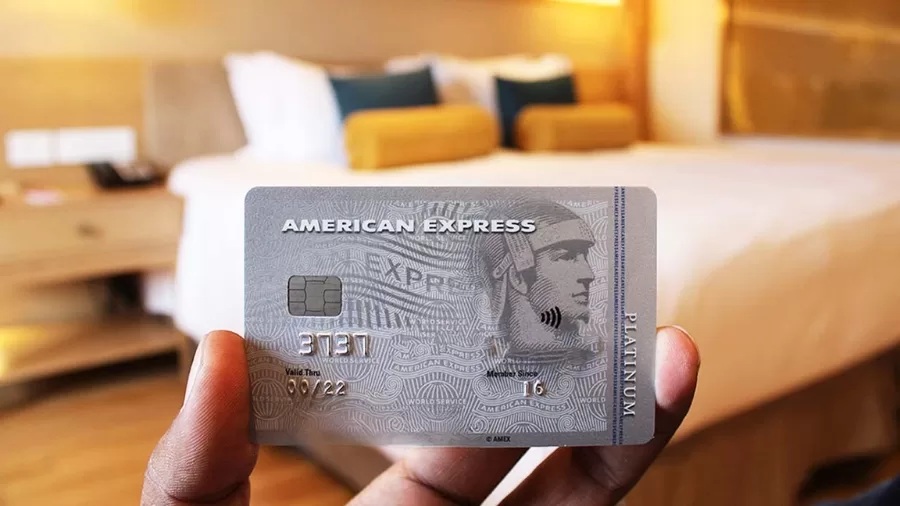Finance
Frequent Flier, Frequent Fees: Are Premium Travel Cards Losing Value?

- Top-tier travel credit cards from Chase and American Express are increasing their annual fees by $100 or more in 2025.
- Frequent travellers may need to reassess how they earn, spend, and value credit card rewards in light of these global changes.
If you’re like me and measure time in visa stamps, travel credit cards aren’t just a financial tool—they’re part of your lifestyle. Whether it’s a 5:30 AM cappuccino in Rome’s Fiumicino or a last-minute upgrade in Singapore, the perks from a card like the American Express Platinum or Chase Sapphire Reserve can shape your travel rhythm. But things are shifting. The comfort once tucked quietly into your wallet is coming with a higher price tag, and that change affects travellers across the world.
Reports from Slate confirm that Chase and American Express are significantly raising annual fees on their most popular travel cards. And while the adjustments are beginning in the U.S., anyone familiar with how global finance operates knows that changes in one market often ripple into others. UK-based cardholders, as well as international users, should be prepared.
The Fees Are Rising—and Fast
Let’s look at the hard numbers first:
- Chase Sapphire Reserve: rising from $550 to $650
- American Express Platinum (US): currently $695, with industry speculation pointing to a potential increase to $795 or more in late 2025 or 2026 as part of an announced overhaul
In the UK, the Amex Platinum already sits at £575. If the trend follows as expected, cardholders could soon be paying upwards of £650 a year. It’s not just about one brand either—fee increases tend to trigger a chain reaction. Other issuers like Barclays and HSBC could follow suit to maintain perceived value parity.
What’s Driving These Fee Hikes?
Behind the price increases are several strategic moves:
- Higher Operational Costs: As global inflation pushes up prices for almost everything—from fraud protection to customer service—credit card companies are passing some of those expenses on to users.
- Expanded Perks: Issuers are bulking up benefits, offering everything from digital wellness subscriptions to rideshare credits and enhanced travel insurance. But many of these new “perks” are geographically limited or require complex activations.
- Wider Redemption Usage: More travellers are using their points and lounge access, which raises the issuer’s cost per user. Lounges are now frequently overcrowded, and perks that used to feel exclusive are no longer rare.
For Global Travellers, the Impact Varies Widely
As someone with both a UK-issued Amex Platinum and a U.S.-based Chase Sapphire Reserve, I’ve seen both sides of this experience. On paper, these cards are packed with value. But in practice, their effectiveness depends heavily on where you are and how you travel.
For instance, lounge access in major cities like New York or London is relatively easy to use, assuming you don’t mind waiting. But try using those same perks in Nairobi or Quito, and you’ll quickly see the limits. Some terminals don’t even recognise the lounge program, and others have blackout hours.
Redemption portals can be equally frustrating. Booking flights through the Amex Travel platform often means higher prices than you’d find directly through the airline. Transferring points to hotel or airline partners can offer better value, but requires a level of planning and loyalty that doesn’t fit all travel styles.
A Breakdown of the Real Costs and Returns
Let’s put the numbers into context. In the UK:
- Amex Platinum: £575 annual fee, likely rising
- Chase Sapphire Reserve: currently ~$650 converted
Benefits include:
- Lounge access valued at ~£30/visit
- Annual credits for travel or dining (£150+ value)
- Comprehensive insurance packages
If you travel internationally three or more times per year and redeem points aggressively, you might come out ahead. But based on my usage—35 flights a year across four continents—I’ve found that I redeem just 60–70% of the advertised benefits.
Ask Yourself: Are You Getting the Value?
Here’s what I use to assess whether a travel card is still worth it:
- Am I using the travel and dining credits fully each year?
- Are my lounge visits regular and stress-free?
- Do I use the insurance for rental cars or delayed baggage?
- Are the points being redeemed for flights and hotels I’d book anyway?
If I can’t confidently answer yes to at least three of those questions, I reconsider the card.
Rethinking Which Cards Work Best Globally
For UK and global travellers alike, there are alternative options worth exploring:
- Barclays Avios Plus (UK) – Ideal if you fly British Airways frequently. £20/month with decent Avios rewards.
- HSBC World Elite Mastercard – More widely accepted in Asia, strong lounge access, £290 annual fee.
- Capital One Venture X (US) – Simpler point structure, $395 fee, better value for general travel spending.
- Revolut Metal / Monzo Premium – Low-fee options that are agile and digital-first, with real-time spending insights and minimal overseas charges.
I spent most of last year travelling through Southeast Asia and found Monzo far more practical than American Express, especially in rural Vietnam or smaller European airports.
How to Decide if You Should Keep or Cancel
Make a travel usage audit. Literally:
- Log every flight, hotel, and lounge use for three months.
- Note whether you’re using your card’s portal, third-party sites, or direct bookings.
- Tally your savings (or lack thereof) on perks.
The goal is to remove assumptions and see your card’s actual return on investment.
The Messaging from Card Issuers vs. Reality
Issuers say these increases bring more value. Chase has promised a new luxury travel portal. Amex touts curated experiences and premium customer service. Yet for many of us, what we experience are waitlist lounges, awkwardly segmented insurance terms, and digital benefits we didn’t ask for.
Forums like Flyertalk and Reddit’s r/Churning community are filled with stories from cardholders who feel the promised luxury isn’t being delivered.
What’s on the Horizon for Travel Card Users
Expect the following by late 2025 into 2026:
- UK and EU fees will align more closely with U.S. levels
- More fintech entrants will offer travel features à la carte
- Card companies may face pressure to increase transparency around real-world redemption rates
The future likely belongs to hybrid cards, offering customisable perks instead of preset packages. Brands that allow travellers to build their benefits, whether it’s extra baggage, carbon offsets, or better mobile support abroad, will stand out.
Advice for Global Travel Buffs
- Track how many perks you use and the savings generated
- Ask your issuer for a breakdown of benefits used annually—some provide this on request
- Don’t be afraid to downgrade or cancel—even long-time customers are doing it
Loyalty doesn’t require blind commitment. Your travel credit card should move with you, not slow you down.























































